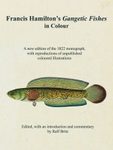![Electronic Tagging and Tracking in Marine Fisheries Electronic Tagging and Tracking in Marine Fisheries]()
Click to have a closer look
About this book
Contents
Customer reviews
Related titles
About this book
Developed from a symposium held in February 2000, at which scientists working in all oceans of the planet presented research results from diverse marine species and habitats.
Contents
Contents. Preface. Electronic Tagging and Tracking in Marine Fisheries: Introduction to the Proceedings; J. Sibert. Electronic Tags in Marine Fisheries Research: A 30-Year Perspective; G. Arnold, H. Dewar. Archival and Pop-Up Satellite Tagging of Atlantic Bluefin Tuna; B.A. Block, et al. Movements and Temperature Preference of Atlantic Bluefin Tuna (Thunnus thynnus) off North Carolina: A Comparison of Acoustic, Archival and Pop-Up Satellite Tags; A.M. Boustany, et al. The Relationship Between Food Intake and Visceral Warming in Southern Bluefin Tuna (Thunnus maccoyii): Can we predict from archival tag data how much a tuna has eaten?; J. Gunn, et al. Aggregating Behavior of Yellowfin and Bigeye Tuna Tagged with Coded Ultrasonic Transmitters around FADs in Okinawa, Japan; Itaru Ohta, et al. Using Radio-Acoustic Positioning and Telemetry (RAPT) to Define and Assess Marine Protected Areas (MPAs); R.K. O'Dor, et al. Using Acoustic Telemetry to Determine Home Range of a Coral-Reef Fish; S.K. Bolden. A Stepwise Approach to Investigating the Movement Patterns and Habitat Utilization of Goliath Grouper, Epinephelus itajara, Using Conventional Tagging, Acoustic Telemetry and Satellite Tracking; A.-M. Eklund, J. Schull. Use of an Automated Acoustic Telemetry System to Passively Track Juvenile Blacktip Shark Movements; M.R. Heupel, R.E. Hueter. Five Tags Applied to a Single Species in a Single Location: The Tiger Shark Experience; K.N. Holland, et al. Use of Telemetry in Fisheries Management: Juvenile Sandbar Sharks in Delaware Bay; B.M. Wetherbee, et al. Orientation and Swimming Speed of Plaice Migrating Plaice by Selective Tidal Stream Transport; A. Buckley, G. Arnold. Notes About the Ecology of Ocellate Puffer, Takifugu rubripes, Using Archival Tags; H. Nakajima, A. Nitta. A Kayak Method for Tracking Fish in Very Shallow Habitats; C.G. Meyer, K.N. Holland. Evaluating Differential Pressure in the European Sea Bass Dicentrarchus labrax as a Telemetered Index of Swimming Speed; D.M. Webber, et al. Geolocation by Light Levels- The Next Step: Latitude; R.D. Hill, M.J. Braun.. Summary Report of the Workshop on Daylight Measurements for Geolocation in Animal Telemetry; J.D. Metcalfe. Ability of Electronic Archival Tags to Provide Estimates of Geographical Position Based on Light Intensity; M.K. Musyl, et al. Recent Progress in Estimating Geoposition Using Daylight; D.W. Welch, J.P. Eveson. Improving our Understanding of Tropical Tuna Movements from Small to Large Scales; L. Dagorn, et al. On the Integrated Study of Tuna Behaviour and Spatial Dynamics: Tagging and Modelling as Complementary Tools; D.S. Kirby. From Individuals to Local Population Densities: Movements of North Atlantic Bluefin Tuna (Thunnus thynnus) in the Gulf of Maine/Northwestern Atlantic; N. Newlands, M. Lutcavage. Possible Models for Combining Tracking Data with Conventional Tagging Data; J. Sibert, D. Fournier. Symposium Participants.
Customer Reviews










































